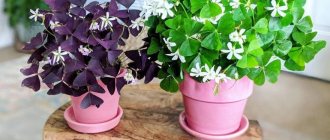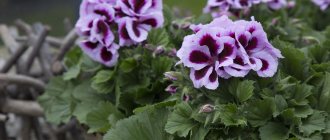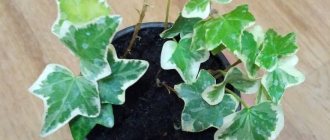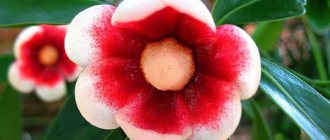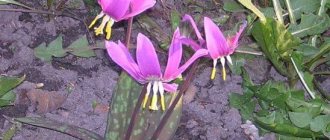Description of the plant
Wet vanilla is scientifically called balsam. More precisely, it is Sultan's balsam. But this name did not catch on among the people: it was too loud for such an unpretentious flower. Therefore, they began to call him in a simple way: Vanka, Ivan. And it began to be called wet because after abundant watering it seems to cry: droplets can be seen on its stems at this time: tears. But they are not salty, but sweet. Other names for this plant: sparkle (due to the bright color of the flowers) and impatiens (due to the shedding of seeds when touching the plant).
Sultan's balsam is a perennial herbaceous plant represented by four hundred species. Its homeland is the countries of Asia and Africa, where tropical and subtropical climates reign. But such a microclimate is easy to recreate at home.
Depending on the variety, under natural conditions, wet roly can reach a height of 0.2 to 2 m. The plant forms a thick, fleshy and juicy, but very fragile and highly branched stem. It is densely covered with dark green leaves sitting on short petioles. In places, sweet crystals form on the shoots: they form in extreme heat after heavy watering when the sweet juice secreted by the plant dries.
The flowering of the flame begins in early spring and ends in late autumn. With good lighting and care, these indoor flowers can form buds even in winter. Flowers can be regular or double. Their color can be one-tone or two-tone. The color of the petals can be different: usually it is bright and rich.
This is interesting! It is believed that wet vanilla gives men virility. Therefore, the flower should be placed in the matrimonial bedroom. However, balsam does not like abuse. Therefore, he stops “acting” if there is frequent fighting in the house. According to other sources, the light brings trouble to the family by causing drunkenness in the head of the family.
Garden balsam
Unpretentious balsam - Vanka wet - is also used in decorative and home gardening. At the same time, plants of familiar indoor varieties are often used for landscaping and landscape design, planted in containers or open ground.
Along with the houseplant Vanka wet, an annual form called “garden balsam” is also used in landscape design. This plant spread from Eastern India, where it occurs wild. It has a lush, erect bush with succulent, fleshy shoots and green, jagged leaves.
The plant blooms long and profusely. The flowers of Vanka wet can be simple or double. They are distinguished by a wide palette of different shades. This heat-loving plant requires a well-lit place. Garden balsam is propagated by seeds.
Often, signs and superstitions are associated with the indoor flower Vanka wet. They say that it has a positive effect on creative people and helps create an atmosphere of harmony and harmony in the home. If peace and respect reign in the family, this flower will bloom magnificently and for a long time. Misunderstandings and disagreements between family members, on the contrary, can have a negative impact on the plant.
Vanka wet received its name because of this feature: droplets of juice often appear on its juicy green stems. Probably for the same reason, a superstition arose that because of the flower, family members may develop a penchant for alcohol.
How these facts are related to each other is unclear. And, of course, it’s up to everyone to believe in such signs or ignore them. But in favorable conditions and a sincere home atmosphere, balsam will bloom and become prettier day by day, delighting household members with the bright lights of its flowers.
Types and varieties
Here is a description of the most beautiful varieties of indoor balsam with photos:
- New Guinea . This type of wet willow is distinguished by dense foliage, colored in a rich dark green color and covered with a light gloss. It contrasts against the background with bright dark orange flowers, which have a small “spur” at the bottom.
- Paradise . The leaves of this variety are very dark, without gloss. Against their background, simple scarlet flowers look impressive.
- Java . The leaves of this balsam are green with a bronze tint. The flowers are painted in various shades of pink.
During flowering, wet Rolyflower really looks like a light. Regardless of the variety of balsam, the flowers of this plant are as bright as flames.
Signs and superstitions
There are several popular beliefs and omens associated with Vanka wet, mostly positive. For example:
- In order for the family to be okay, you need to monitor the condition of the flower, while it is good, and the family is good, as soon as the balsam gets sick, you have to wait for quarrels and discord.
- To stop quarrels, you need to buy balsam for the house. The same works for offices.
- Vanya wet attracts inspiration. Creative people benefit from keeping it close to them.
- It has a good effect on men, helps them acquire masculinity, attracts luck, strength, courage and physical health.
However, there are also a couple of bad omens. The appearance of this flower was once associated with the fact that the man in the family began to drink heavily.
And if the balsam withers, it means something is wrong in the house. It was believed that this flower reacts very sensitively to scandals, squabbles and an unhealthy atmosphere in the family.
Vanka wet should definitely be on every windowsill, and not only because it brings good luck and removes negativity, but also because it pleases the eye and softens the heart.
Selection of location and conditions of detention
Now let’s find out in what conditions impatiens need to be kept so that the plant forms a bush densely covered with bright flowers.
Lighting and location
Vanka wet loves a lot of light, but it must be diffused. Therefore, it is best to place the pot on an eastern or southern windowsill with light shade. You can place the plant at the back of the room if it is well lit. In summer, the flower can be placed on the balcony, but in cold and windy weather it must be brought home. In winter, you can illuminate the balsam with an artificial lamp, but this is not urgently necessary.
Temperature
The optimal temperature for growing Sultan's balsam is +18...+20 oC. The plant is not afraid of short-term heat (about +30 °C), but does not tolerate cold (below +15 °C).
Air and humidity
The flame requires well-humidified air (60-80%). Its leaves should be frequently sprayed with lukewarm water. Do not leave a pot with a flower in a draft.
Soil and pot
The soil for wet roly-poly should be loose and light. It is desirable that it has a slightly acidic reaction. It should not contain many nutrients, since excess organic matter leads to an increase in the green part of the plant and a decrease in the number of buds.
You can buy universal soil for indoor plants. But it is better to use a mixture of river sand, peat and leaf soil. These components must be taken in a ratio of 1:1:2.
A pot for wet roly-poly should be of medium size. Its diameter and width should be 15-20 cm. Indoor balsam grows quickly, so there is no point in planting a small bush in a small pot first: after a month it will have to be transferred to another container.
It is better to choose plastic as a material, as it retains water better. If the pot is ceramic or clay, then you will have to water the flower more often. It is important that the pot has drainage holes.
How to stimulate flowering?
In most cases, Balsam blooms at the beginning of summer and can continue until late autumn . However, if in winter a good temperature (+21-23С) and optimal humidity are maintained, then flowers will continue to appear for most of the winter. Thus, Impatiens can bloom most of the year.
This means that we can conclude that the flower pot should be kept warm and should always have enough moisture.
In addition, it is well known that Impatiens may not bloom for a long time due to the increased formation of the root system. In other words, flowering begins only when the roots completely entwine the entire earthen ball in the pot.
Care
Caring for a wet roly-poly is quite simple. Therefore, this flower is suitable for beginners in the field of floriculture.
Watering
The wet plant needs to be watered with lukewarm, settled water every time the top layer of soil begins to dry out. The soil should not be allowed to dry out completely: otherwise the stems will quickly shed their leaves, they will become bare and ugly. At the same time, the number of buds formed will sharply decrease.
You need to water abundantly: some of the excess water should come out through the drainage holes. In summer, during extreme heat, it is better to moisten the soil once a day or two. In winter, watering can be reduced to once a week. During the period of active growth, it is advisable to give the plant a shower 3-4 times a month: to do this, spray it with lukewarm water from a spray bottle. It is better not to do this procedure in winter.
Top dressing
Since wet willow blooms from spring to late autumn, it needs to be fed only with complex fertilizers for flowering plants. Fertilizers from the following brands are suitable for this: Agricola, Zdraven, Kemira. Uniflor-Bud fertilizer is well suited for this.
Fertilizing is combined with watering and done once every 2 weeks until the plant finishes blooming. But it is better to use a less concentrated solution (take 2 times less fertilizer than indicated on the package), since excess minerals will reduce the number of buds that form.
Loosening, mulching
When a hard crust forms, the soil in the pot must be carefully loosened. This can be done using a toothpick: stick it into the ground strictly vertically so as not to damage the balsam roots.
Pinching, pinching, pruning
There is no need to trim indoor flowers. But if you want to get a more lush bush, then you can pinch out the growing point of the side shoots. Then new branches will grow on them. This also stimulates the formation of new buds. But this makes the leaves become smaller and less beautiful.
Transfer
Wet Vanya should be replanted every spring. Moreover, it is not necessary to use a new pot: you can use an old one. Only it will need to be treated with potassium permanganate. But the soil must be fresh. A new container will only be needed if the flower initially grew in a very small (less than 10-15 cm in diameter) pot.
Algorithm of actions at home
Balsam transplantation is carried out as follows:
Before upcoming events (a day before), thoroughly water the soil.
- Carefully remove the plant from the old container.
- Shake all the roots off the ground and assess their condition. Remove all dry, rotten, old and heavily entangled roots using a sharp knife.
- Disinfect the cut areas and sprinkle with wood ash or crushed activated carbon.
- Place the substrate at the bottom of the new pot and carefully place the plant in it, straightening the root system.
- Pay attention to the location of the root collar. It should not be covered with soil. Leave it above the surface of the soil, but a few centimeters below the edge of the container.
- Fill the soil to the required level and compact it lightly.
- Carefully water the newly transplanted flower and place it in the shade for rooting and acclimatization for 3-5 days.
Advice . If you choose a wider pot, you can plant several balsams in it at once. At the same time, you can get an original and elegant composition if you use plants with inflorescences of different colors.
Watch the video on how to transplant several balsams into one pot.
Reproduction
Sultan's balsam is propagated by stem cuttings. For this:
- Cut off the top of a healthy shoot 5-6 cm long.
- Place it in a glass of water.
- Change the water every day.
- When roots 2-3 cm long appear (usually after 2 weeks), plant the cuttings in a pot.
Another way to root cuttings is to plant them directly in a pot with soil. But you need to make sure that the substrate never remains dry.
Advice! While rooting the balsam stem cutting, place the pot in a shaded area.
Balsams are rarely propagated by seeds. Typically, this method of propagation is resorted to when there is nowhere to get a stem cutting from.
Planting wet vanilla seeds for seedlings:
- Prepare a bowl by pouring the substrate into it that is used for growing adult plants.
- Moisten the soil and scatter balsam seeds over its surface.
- Lightly press down the seeds with your hands, but do not bury them.
- Cover the blanket with polyethylene and place it in a well-lit and warm place.
- Ventilate the bowl daily by removing the film from it. If necessary, moisten the substrate by spraying.
- After the first shoots appear, remove the film.
- When the seedlings reach a height of 1 cm, transplant them into seedling cups.
When the seedlings form powerful bushes, pinch their tops and transplant them into permanent pots.
Advantages and disadvantages
The advantages of this flower include:
- Easy to care for, just water moderately and regularly.
- Quick, easy rooting of cuttings in water.
- Early flowering, and up to 7-8 months in a row, the duration of abundant flowering without replanting is up to 3 years.
- Variety of colors.
- An abundance of bushes with proper care.
- Elegant appearance that can decorate the interior of any room.
- Decorative leaves with a variety of colors: purple, light green, black, bright light.
- Growing beautiful flowers in the form of roses.
- Planting plants not only in the apartment, but also in the garden, in flower beds, containers.
Among the disadvantages are:
- Plant instability to the onslaught of various types of pests, death from the invasion of mites, whiteflies.
- It is necessary to treat wet vanilla with pest repellents at least 2-3 times a year.
- Unadapted to proximity to other plants. They need to be placed far away, otherwise the wet Roly will begin to shed its leaves.
Diseases and pests
Diseases rarely affect impatiens. A flower can only get sick if it is not cared for properly. This usually happens in winter, when it is cool on the windowsill and cold air blows through the cracks in the window. At this time, with excessive watering, the soil turns sour and the roots begin to rot. In this case, the flower must be urgently transplanted into a new pot with a new substrate.
Other problems you may encounter when growing moss at home, and how to solve them:
- Leaves fall . The flower is either too hot or too cold. This can also happen with infrequent watering. You will have to adjust the maintenance conditions and restore the watering schedule.
- There are very few buds . This happens if balsam is kept in poor lighting conditions. Another reason is the excess amount of minerals and organic matter in the soil. In this case, the plant forms a powerful bush, and it looks completely healthy.
- Leaves become pale . They sag, and there is a thin cobweb in the internodes. This happens when a plant is damaged by spider mites. Typically, this pest lives in conditions of low air humidity. To combat it, use insecticides (Aktaru, Inta-vir, Karbofos).
- Leaves and stems are deformed . And on their surface clusters of pests are visible. This is an aphid. It can be destroyed manually. Spraying the plant with soapy water also helps against it.
Vanka wet is a fast-growing and almost continuously flowering indoor plant. It requires good but simple care. That is why the flower is so common among beginners and amateurs. Plant it on your windowsill to admire the fiery flowers against the dark and shiny foliage.
Caring for balsam after purchasing from a store
Balsam purchased in a store
A couple of weeks after purchasing it in a flower shop, after acclimatization to new conditions, the flower should be replanted in a permanent place. There are several reasons for this. Firstly, purchased soil does not always contain enough minerals for optimal growth. Secondly, the plant quickly grows from temporary pots.
But there is one peculiarity . During a two-week quarantine, you should not feed or spray the flower, but water it moderately, less than normal. This quarantine will help identify diseases and pests that Balsam could have been infected with while still in the store.
Varieties of plants, popular varieties for growing in the country, what they look like
Phloxes in a flowerbed in the garden
To suit your taste, you can choose a variety of any color from white to rich burgundy, almost black. All varieties are divided into dwarf - up to 15 cm high (for borders and pots), and tall - up to 50 cm high and above, suitable for flower beds.
Camellia Flowers
Quite a tall variety, bushes up to 50 cm high. The color of the petals on the corollas with a diameter of up to 4 cm ranges from white to deep pink and red. The bush branches heavily, the shoots are fragile. The leaves are green, narrow, lanceolate, with a jagged edge. Single buds are formed on shoots in the spaces between pairs of leaves.
Impatiens Camellia flowered
Tom Thumb
It differs from others in having thicker fleshy shoots and very large flowers. From each axil of green leaves with jagged edges buds of red, white, purple, pink double flowers up to 4-5 cm in diameter peek out.
Balsam Tom Thumb
Baby Bush
A very versatile variety, characterized by its low growth - up to 20-25 cm. Flowers can have a simple shape or semi-double, and a variety of colors. The leaves are wider, close to heart-shaped, dark green without pubescence.
Balsam Baby Bush
Moving the plant to open ground
Before transplanting a plant into open ground, you need to choose a suitable place for it , focusing on the following recommendations:
- Garden balsam is not picky in terms of choosing “neighbors”. Begonias, fuchsias, and verbena can be planted near it.
- You can get active growth and long flowering if you plant the crop on the western or eastern side.
- For balsam, moisture stagnation, constant dampness, frequent cold and drafts are not allowed.
- The soil should be loose, nutritious and with good drainage from expanded clay.
- The growth and development of the plant is negatively affected by heat and acidic soil. In such conditions, it stops blooming and the leaves fall off.
- Before planting, be sure to fertilize the soil with humus.
When all the preparatory activities have been completed, you can proceed to the actual planting :
- Thoroughly moisten the soil in which the seedlings are located. Do this 2-3 hours before landing.
- Make holes in the ground. Place them at a distance of 25-30 cm.
- Add fertilizer and water to each hole.
- Carefully remove the seedlings and transplant them into the prepared hole.
- Compact the soil around each plant and mulch using sawdust. Mulch is an excellent way to protect the soil from overheating and to retain moisture.
Below you can see a photo of an indoor flower.
How to care in the coming weeks?
Watering
A time interval of 2 days must be observed between waterings. The top layer should not dry out completely . Otherwise, the flower will begin to wither and wither.
But stagnation of water in the pan will have a bad effect on the plant. So 3-4 hours after watering it needs to be poured out. Otherwise, this is fraught with insect attack and the development of fungal diseases. Use soft, settled water for irrigation.
Humidity
During flowering, spray balsam if the temperature is above 21-22 degrees . Liquid getting on the inflorescences is unacceptable, otherwise it will lead to the development of unsightly spots on the delicate petals.
Place an open container of water near the plant during its flowering. This will maintain optimal air humidity.
Top dressing
Add fertilizer to water for irrigation and apply every 2 weeks throughout the flowering period . At this time, the plant will expend a lot of energy, so it needs to be provided with additional nutrition.
Read about how to feed balsam for abundant flowering and how to water it properly in this material.
Diseases and pests
Garden balsam is susceptible to the following diseases and pests:
Cucumber mosaic . The leaves are damaged, their growth stops, they become wavy and covered with yellow spots.
Tear off the affected leaves. As a preventive measure, active control of aphids, which are carriers of the virus, is used.
Ring mosaic .
The leaves begin to become woody, crack and become covered with spots that look like ring fingerprints. The plant gradually withers and dies. Affected leaves should be removed immediately.
Bronzing .
The growth of leaves is inhibited, which leads to their deformation. As a result, they shrink and fall off. Plants affected by the virus cannot be saved; they must be disposed of, otherwise the disease can spread to other plants.
Viral mosaic .
The foliage becomes covered with yellow spots and becomes wavy. For prevention, treat the plant with a product against thrips and aphids (Decis Expert, Confidor), which spread the virus.
Spider mite .
This insect weaves its web on the inside of the leaves, and then it eats them. For prevention, treat with a soap solution (1 liter of water and 40 g of soap). Remove affected leaves.

